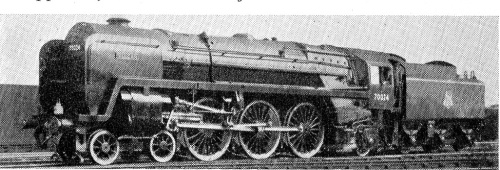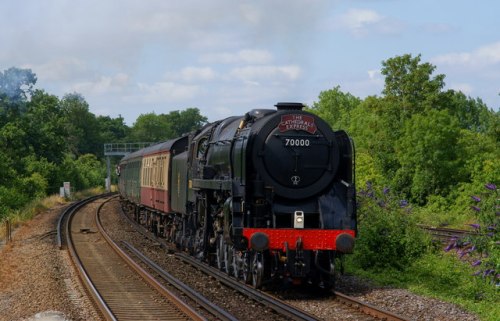Steam Locomotives of a Leisurely Era
1954 – Class 9 2-10-0
British Railways
This was the last of the twelve BR standard designs to appear, the first example of which came out in 1954. A large 2-10-0 engine intended in the main for heavy freight traffic, these locomotives have on occasions been used with considerable success on passenger trains, although not as a regular thing. A speed of 90 mph has been recorded on at least one occasion, an extraordinary figure for a ten-coupled engine with wheels of only 5’ 0” diameter.
In all 251 engines of this class have been turned out, Nos.92000 – 92250. The final one actually built was No.92220, which appeared from Swindon in March 1960, and was appropriately named ‘Evening Star’. This was the last new steam locomotive constructed for British Railways.
Nos.92020-9 were built experimentally with Franco-Crosti type double boilers, a peculiarity of these engines being that the chimney is only used when the locomotive is being lighted up from cold, the normal exhaust coming from a separate outlet midway along the left hand side of the boiler. No.92250 was fitted with an experimental type of chimney embodying a device known as the Giesel ejector. This has been used extensively in Austria, and is said to give remarkable results in economy of coal consumption.
Unfortunately this invention appeared too late on the scene to result in any appreciable prolongation of the life of the steam locomotive in this country. That it is by no means due for an early extinction, however, is shown by the fact that even when the present modernisation plan is complete there will still be at work a total of about 7000 steam engines on British Railways (1959).
Driving wheels – 5’ 0”, Cylinders (2) – 20”x 28”, Pressure – 250 lb., Tractive effort – 39760 lb., Weight – 86 tons 14 cwt (The Crosti boiler engines weigh 90 tons 4 cwt), Classification – 9F









